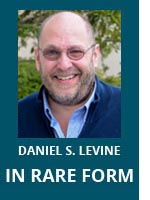
Valeria Schenkel, a child with a rare epilepsy who was treated with a customized antisense oligonucleotide, died from a build-up of fluid in her brain as a result of the treatment, according to a report in The New York Times.
Schenkel had KCNT1-related epilepsy, an ultra-rare, genetic, seizure disorder. The newspaper noted she suffered from dozens of seizures a day and was unable to sit up or speak. Half of the children with the condition die by the age of 3.
Timothy Yu, a neurologist and genetics researcher at Boston Children’s Hospital, who has pioneered development of N-of-1 therapies for ultra-rare conditions, developed the therapy known as valerisasen. The occurrence of hydrocephalus, because of the treatment, was reported at the American Neurological Association meeting in Chicago.
A second child who was treated with the valerisasen also developed hydrocephalus and nearly died last year.
“I think it’s worth saying: No question that encountering hydrocephalus has been a setback, sobering and important,” Yu told The New York Times as he noted that traditional drug companies are not helping patients with thousands of rare, untreatable and rapidly progressing diseases that cause death and severe disabilities. Personalized genetic treatments, he said, may be their only hope.
The precision and elegance of genetic medicines are compelling, but the death is a painful reminder to proponents of N-of-1 therapies that these treatments come with risks. Even for parents of children with fatal conditions, the decision to pursue such treatments can be difficult because of fear of doing more harm than good. But if there’s a takeaway from this story, it is that the best way to minimize risk and maximize the benefits of these therapies to patients is not to be timid in pursuit of treatments but to share data so we can collectively learn as much as possible about them.
Roche in 2021 reported that three patients in a clinical trial treated with an experimental antisense therapy for the rare, neurodegenerative condition Huntington’s disease developed hydrocephalus. The Times also noted some patients treated with the approved antisense therapy nusinersen have developed hydrocephalus, but the fluid build-up is a problem for many neurological conditions. Whether there is a problem using ASOs to treat these conditions remains unclear.
Erika Check Hayden, who wrote the story, notes “The new reports underscore the need for researchers to share data on experimental drugs that are tested in only one or a few people.” While the FDA must approve the clinical studies of an experimental personalized therapy, there is no requirement that researchers share their data.
The development of therapies for small patient populations is riddled with obstacles. These are only amplified when developing N-of-1 therapies. People who are devoting themselves to advancing therapies for people fall short of doing what they can for people with rare disease when they don’t share data they have, particularly when things to go well.
“We have to learn as much as we can from each and every one,” Yu told Hayden, “because they’re just so incredibly valuable in every sense.”

Stay Connected
Sign up for updates straight to your inbox.
